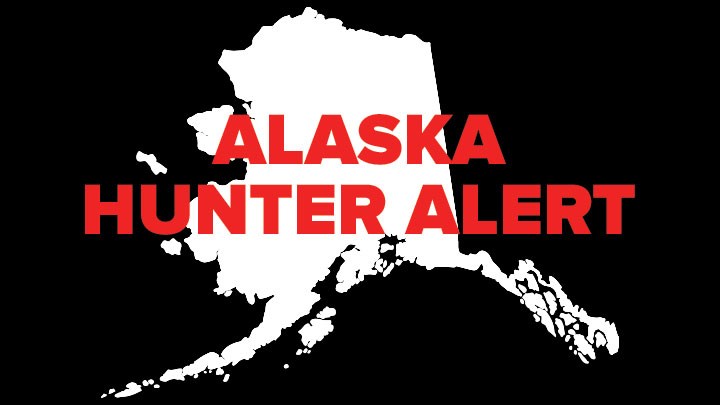
by Cody McLaughlin - Monday, April 19, 2021

The Biden Administration’s Department of Interior (DOI) made waves in the hunting community last week by abruptly closing millions of acres of public lands in Alaska to caribou and moose hunting between Aug. 1-Sept. 20, 2021—prime time during hunting season and the peak rut—except for “federally qualified subsistence hunters.”
The DOI’s temporary “special action request” took effect as the Federal Subsistence Board (FSB), which has authority superseding even the Alaska Department of Fish and Game, reviews a proposal from the Northwest Arctic Subsistence Advisory Council to add new language to federal regulations to close caribou and moose hunting on federal lands in Game Management Units 23 and 26A. Federal lands comprise approximately 40 of the 66 million acres in the two units—roughly the size of Georgia. This move effectively would prohibit non-residents and many Alaska residents from hunting caribou and moose, yet the DOI has failed to cite any scientific evidence or data on its reason for the closure.
The DOI’s authority is based on the Alaska National Interest Lands Conservation Act (ANILCA), a piece of legislation that U.S. President Jimmy Carter signed into federal law in December 1980. It allows the DOI to close hunting on federal lands to everyone except federally qualified subsistence hunters. As the DOI’s National Park Service website notes, ANILCA stipulates the designation of subsistence management, wilderness, transportation in and across parklands, use of cabins, mining, archaeological sites, scientific research studies and more.
Hunters Must Act!
In light of swift backlash to the public land closure from hunter-backed wildlife conservation and hunter advocacy groups such as the NRA, Dallas Safari Club and Sportsmen’s Alliance and their members, the DOI announced that hunters in Alaska and around the country can make their voices heard this week. Written public comments on this temporary special action request may be submitted via email between Apr. 16 and 20, 2021 to this address—[email protected]—and will be provided to the FSB for consideration.
In addition to the five-day public comment period, public comments will be accepted during a public hearing on Fri., Apr. 23, from 5-7 p.m. To participate in the teleconference, call 877-918-3011 and use Passcode 8147177.
The Facts on Subsistence Hunting and Harvests
For those unfamiliar with what a “federally qualified subsistence hunter” is, the Bureau of Land Management (BLM) defines these hunters as “the customary and traditional uses by rural Alaska residents of wild, renewable resources for direct personal or family consumption as food, shelter, fuel, clothing, tools or transportation; for the making and selling of handicraft articles out of nonedible byproducts of fish and wildlife resources taken for personal or family consumption; and for the customary trade, barter or sharing for personal or family consumption.”
The current rural subsistence harvest, according to the BLM, is about 354 pounds of food per person per year. That is more than the U.S. average consumption of 255 pounds of domestic meat, fish, and poultry per year. (The average American uses a total of 1,371 pounds of all foods per year.) However, there are other important uses of subsistence products, such as clothing, fuel, transportation, construction, home goods, sharing, customary trade, ceremony and/or arts and crafts.
While this law grants authority for this closure to the DOI, the law’s original intent was to add a protection mechanism for both wildlife and Alaska’s rich, culturally significant history of subsistence hunting. This case is different as there has been no data to support the closure.
Examining the Science
While the rules do favor the area’s subsistence hunters, and rightly so based on the deep cultural significance of living off the land that many rural Alaskans enjoy, data on caribou numbers in the Western Arctic Herd (the herd in question) suggests there is room to continue responsible harvests by both local residents and non-local hunters. In fact, so-called non-qualified “users” contributed only single-digit percentages of the annual Western Arctic Herd harvest since 2000 and even less—2.3 percent—since 2016.
Outdoor publications such as Outdoor Life have speculated loudly that the true driver behind this issue is “conflict between resident and non-resident hunters”—local protectionism driving favoritism in an already prohibitively-restrictive scenario. For instance, in contrast to the minimal impact non-local hunters have had on the Western Arctic Herd, the Alaska Department of Fish and Game website notes that current state regulations offer liberal five-caribou-per-day bag limits for residents, with no closed-season on bulls, and even allowed the taking of calves in 2020.
The fact is, hunters and non-hunters alike have a responsibility to manage herds for the enjoyment of public resources for all Americans into the future. While respect for local culture and the prioritization of local subsistence harvests is understandable, the science is clear that there is room at the table—and in the outdoors—for everyone in America’s largest state.
About the Author
A recent new resident of Alaska, Cody McLaughlin is a conservationist advocate on public policy issues including hunting, fishing, gun rights, free-market tax and wage policy and the environment. He works as a GOP consultant for conservative political causes, managing clients’ digital communications and online presence and as a trustee of the New Jersey Outdoor Alliance, helping to represent the state’s 1.2 million sportsmen in the political arena.
E-mail your comments/questions about this site to:
[email protected]
